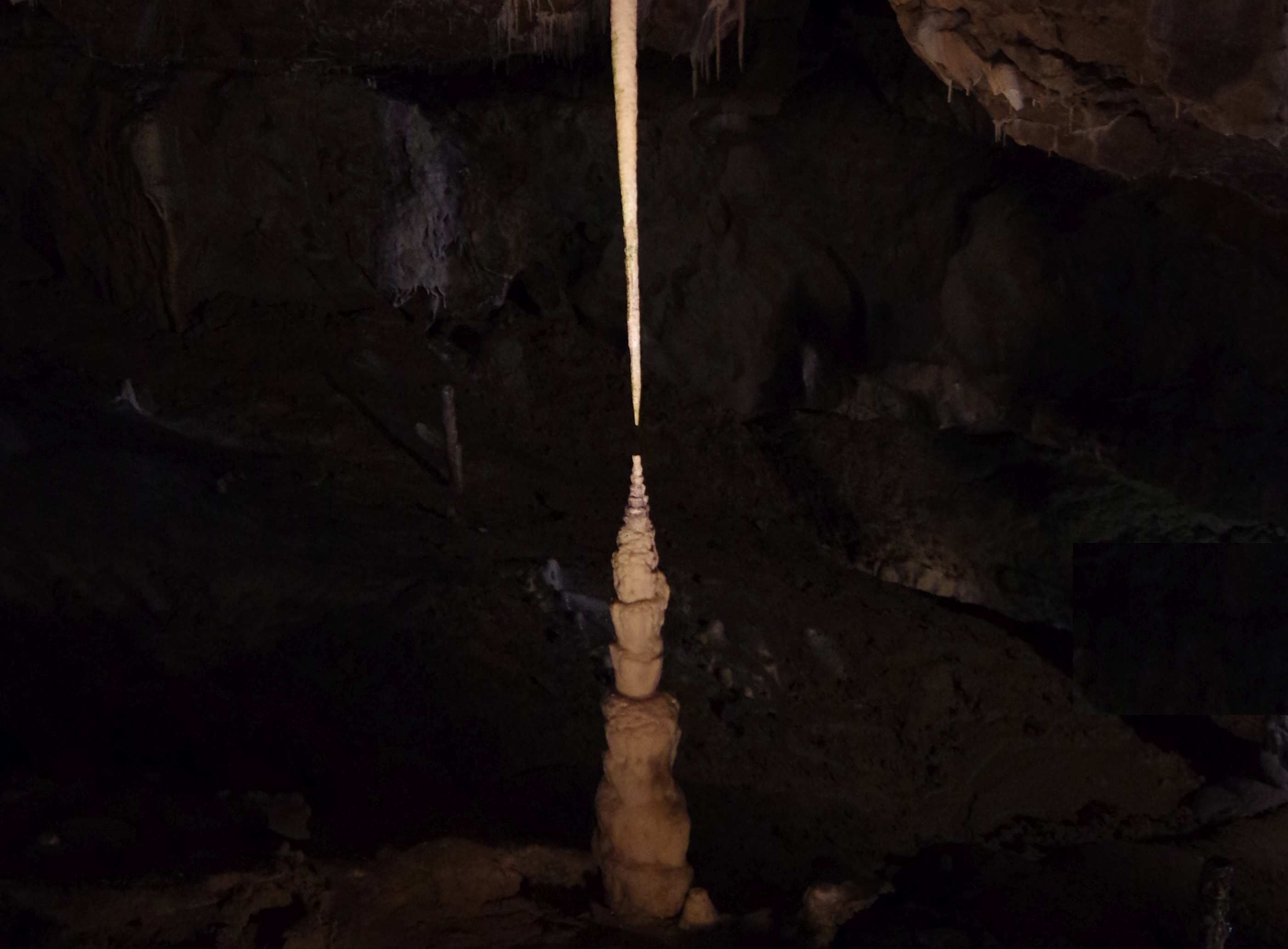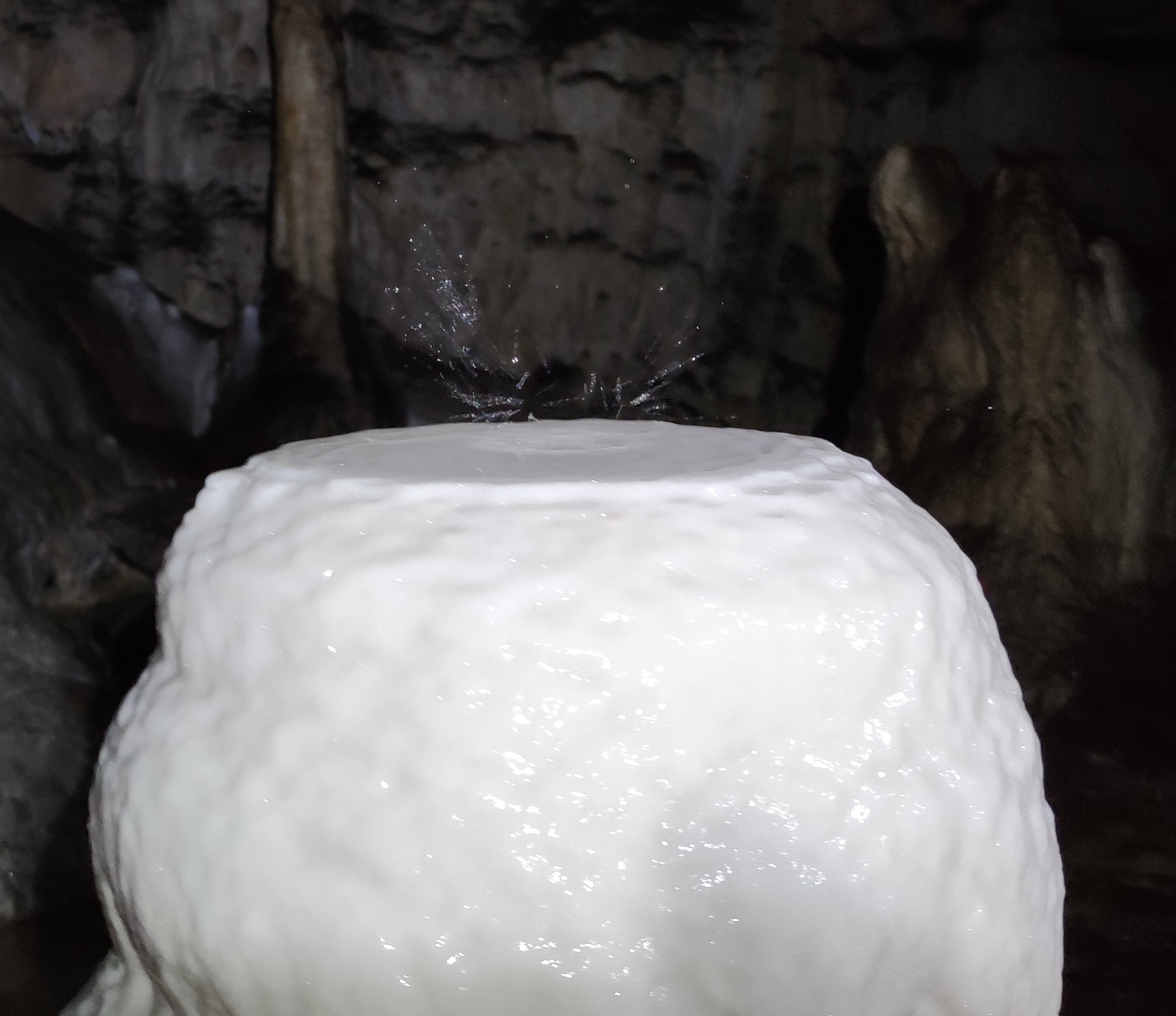Drip by drip: The hidden blueprint for stalagmite growth
2025-10-18
Deep inside caves, water dripping from the ceiling creates one of nature’s most iconic formations: stalagmites. These pillars of calcite, ranging from centimeters to many meters in height, rise from the cave floor as drip after drip of mineral-rich water deposits a tiny layer of stone. Beyond their beauty - echoed in fanciful nicknames like the “Minaret” or the “Wedding Cake” – stalagmites are also natural archives, recording ancient climatic changes in their layered growth, much like tree rings. But what determines the shape of a stalagmite? Why do some grow into slender cones, others into massive columns, and still others into curious flat-topped forms? A new study by researchers from Poland, the USA, and Slovenia, published in the Proceedings of the National Academy of Sciences (PNAS), provides the first complete mathematical description of stalagmite shapes

The team found an analytical solution for the mathematical model of the growth of "ideal" stalagmites in constant cave conditions. The mathematics reveals one of nature's hidden blueprints: stalagmites grow into flat-topped pedestals, classical columns, or pointed cones not by chance, but according to a single controlling factor – the Damköhler number – which represents a balance between the rates of calcite precipitation and the flow of water. When dripping is concentrated and steady, a columnar form emerges, while spread-out dripping produces flat tops. When the flow rate is high or when water drips directly onto the stalagmite from the cave roof, conical shapes with sharp pointed tops can emerge.
“It turns out that the rich diversity of stalagmite shapes can be explained by one simple parameter,” says the lead author Piotr Szymczak of the Faculty of Physics at the University of Warsaw. “This is a rare case where the beauty we see in nature corresponds directly to a clean mathematical law.”

To test their theory, the scientists used X-ray tomography on stalagmites from Slovenia’s famous Postojna Cave. The scans, performed in Ljubljana University Medical Centre, matched the predicted shapes with striking accuracy. Even delicate details, such as the transition from a flat top to a columnar body, were captured by the equations.
“When we compared our analytic solutions with real cave samples, the match was remarkable,” adds Matej Lipar from the Slovenian Academy of Sciences and Arts. “It shows that even under natural, messy conditions, the underlying geometry is there.”
The study also shows that shape matters for climate science. Stalagmites are widely used to reconstruct rainfall and temperature records through subtle shifts in the chemical signatures of carbon isotopes trapped inside the stone layers, rather like reading a diary written by ancient rainwater. The new model reveals that flat-topped stalagmites record these isotope signals differently from columnar or conical ones – a finding that could refine how paleoclimate records are interpreted.
“Stalagmites are natural climate archives, but we now see that their geometry leaves its own imprint on the isotopic record,” explains Anthony Ladd of the University of Florida. “Recognizing this effect will allow us to extract more reliable information about past climates.”
So the next time you stand in front of a stalagmite - whether in Poland’s Raj Cave, Kentucky's Mammoth Cave, or Slovenia's Postojna Cave, you may see more than a curious rock formation. Stalagmites are not just stone curiosities; they are natural laboratories where physics, chemistry, and geology meet – and now, with mathematics, their forms can be read like a code written over millennia by dripping water.
Faculty of Physics at the University of Warsaw
Physics and astronomy at the University of Warsaw appeared in 1816 as part of the then Faculty of Philosophy. In 1825, the Astronomical Observatory was established. Currently, the Faculty of Physics at the University of Warsaw consists of the following institutes: Experimental Physics, Theoretical Physics, Geophysics, the Department of Mathematical Methods in Physics, and the Astronomical Observatory. The research covers almost all areas of modern physics on scales from quantum to cosmological. The Faculty's research and teaching staff consists of over 250 academic teachers. About 1000 students and over 150 doctoral students study at the Faculty of Physics UW. The University of Warsaw is among the 300 best universities in the world, educating in the field of physics according to Shanghai’s Global Ranking of Academic Subjects.
SCIENTIFIC PUBLICATION:
P. Szymczak, A.J.C. Ladd, M. Lipar, D. Pekarovič, Shapes of ideal stalagmites, Proc. Natl. Acad. Sci. USA, 122, e2513263122, 2025
https://doi.org/10.1073/pnas.2513263122
CONTACT:
Prof. Piotr Szymczak
Faculty of Physics, University of Warsaw
pa.szymczak@uw.edu.pl
https://www.fuw.edu.pl/~piotrek/
tel. +48 22 55 32 909
RELATED WEBSITES WWW:
https://www.fuw.edu.pl/faculty-of-physics-home.html
Website of the Faculty of Physics, University of Warsaw
https://www.fuw.edu.pl/press-releases.html
Press service of the Faculty of Physics, University of Warsaw
GRAPHICAL MATERIALS:
FUW251017b_fot01
https://www.fuw.edu.pl/tl_files/press/images/2025/FUW251017b_fot01.jpg
Flat-top stalagmite, Postojna Cave, Slovenia. Falling drops wet a small circular patch rather than a point, keeping the top level as calcium carbonate precipitates. (Photo by Matej Lipar)
FUW251017b_fot02
https://www.fuw.edu.pl/tl_files/press/images/2025/FUW251017b_fot02.jpg
“Romeo and Juliet”, a stalactite–stalagmite pair from the Punkva Caves, Czechia. The partners grow toward each other as calcium carbonate precipitates from dripping water. Their asymmetry – an icicle-like stalactite above and a bulkier stalagmite below – reflects a transition between precipitation kinetics. (Photo by Piotr Szymczak)





